We are growing cassava in zone 8b, which is far from its preferred tropical climate!
Yet we’ve found it to be quite possible to grow it here, with a little extra work.
Yesterday three of my sons and I cut down all the cassava plants growing in our gardens, taking the canes to the greenhouse and leaving the stumps and roots in the ground.
The canes will be turned into cuttings, some of which we’ll sell, and others of which we’ll plant out in the spring.
The stumps left behind in the garden were then covered with old hay to keep them from freezing. In the spring, we’ll uncover them and they’ll grow new canes, and the roots beneath the ground will grow much larger and be ready for harvest next fall.
In a tropical climate, cassava is often ready for harvest in about a year. Here, it usually takes longer than that since they don’t grow well in cooler weather. Most of their growth takes place from April into October, and then nothing happens during the cool months. Since they’re not frost tolerant, they also get wrecked when the weather drops to 32F or below. The entire canes freeze readily and die.
This requires us to take cuttings before the cold, and to cover the bases of the plants so they don’t freeze to death.
Sometimes they’ll emerge from the ground in the spring even without protection, but they have a much higher success rate if you mulch over the cut stumps.
These are first-year roots from a plant we started in the spring from a cutting, then harvested from the Grocery Row Gardens in fall before frost:
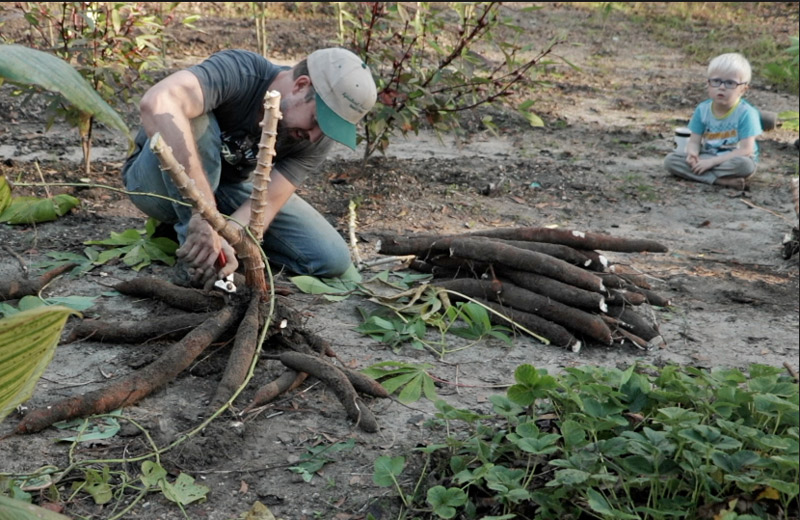
Though the roots were worth harvesting, they aren’t nearly as big as they could be! They would have grown much bigger in the second year, if we had kept them through the winter.
This is how the roots grow in spokes, reaching out from the main stem:
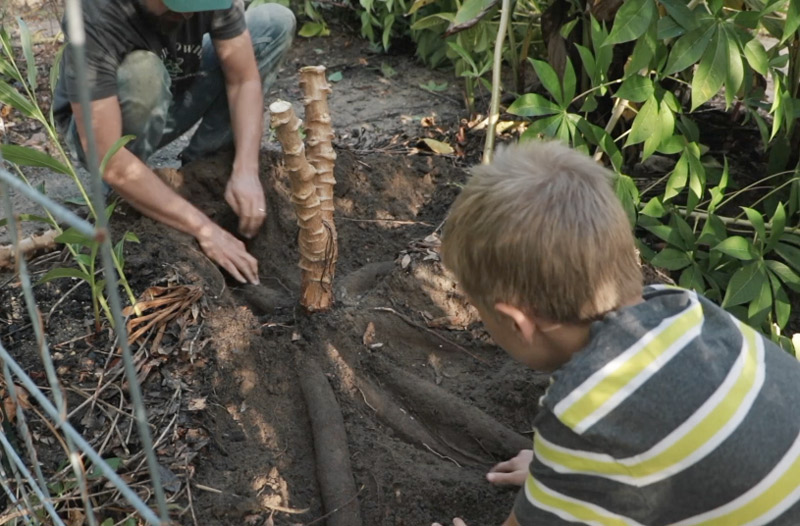
Yesterday we did harvest a few roots from a precocious plant, but with the other thirty or so plants, we simply cut them down, saved the canes, then mulched over the bases.
Here are the canes in the greenhouse right now:
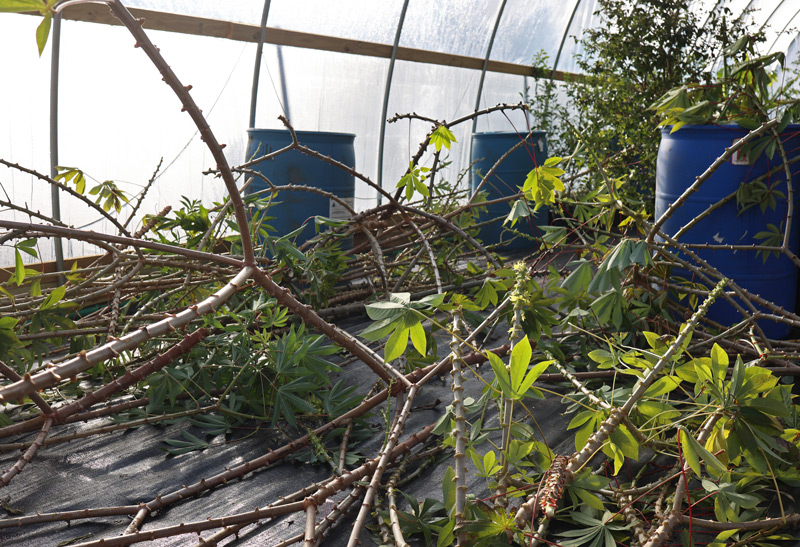
And, looking the other direction…
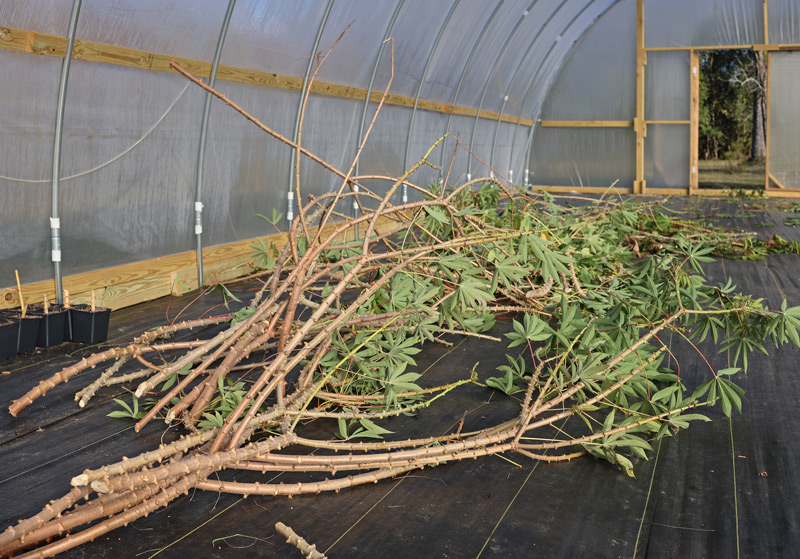
That’s a lot of cassava!
Meanwhile, these are what the remaining stumps look like in the garden:
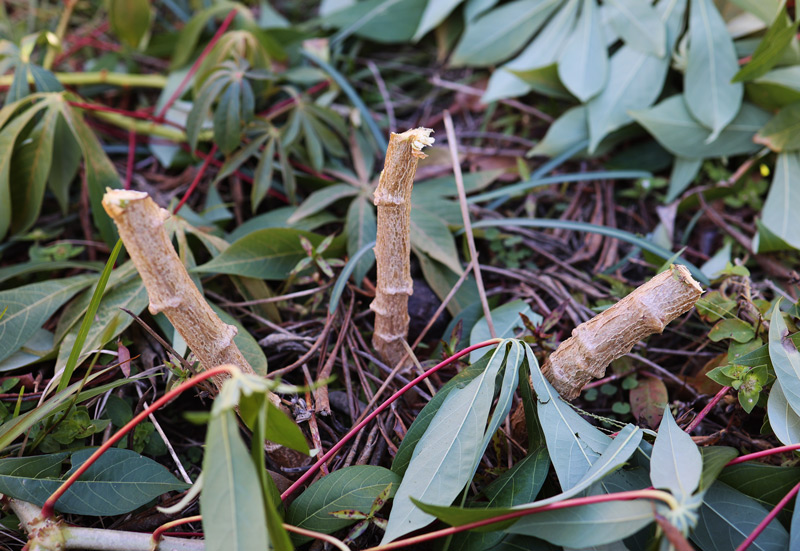
A pile of leaves, straw, or, in our case right now, old rotten hay, is then used to cover the cassava stumps
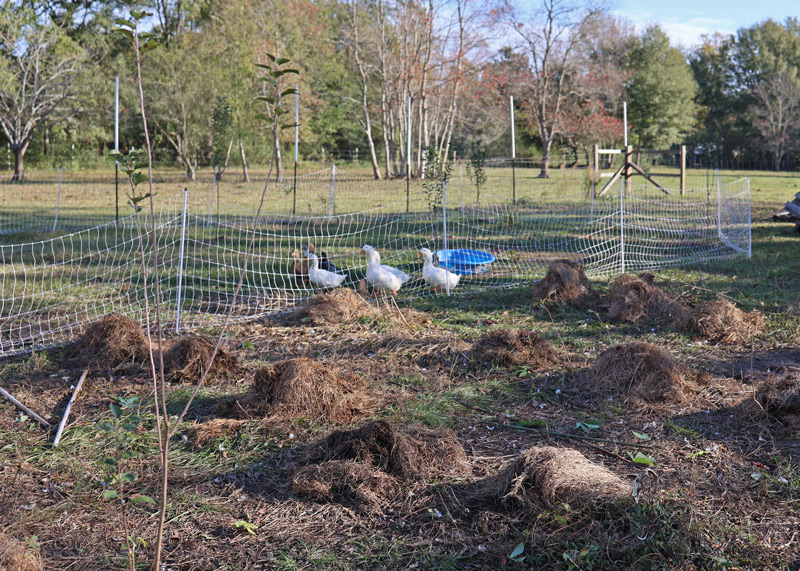
Each of those little mounds of hay is covering cassava plant. They’ll reemerge in spring when the weather warms, growing rapidly and producing much larger yields than if we harvested them now.
I’ve posted more on how to grow cassava here.
And you can get your own cassava cuttings to plant here.

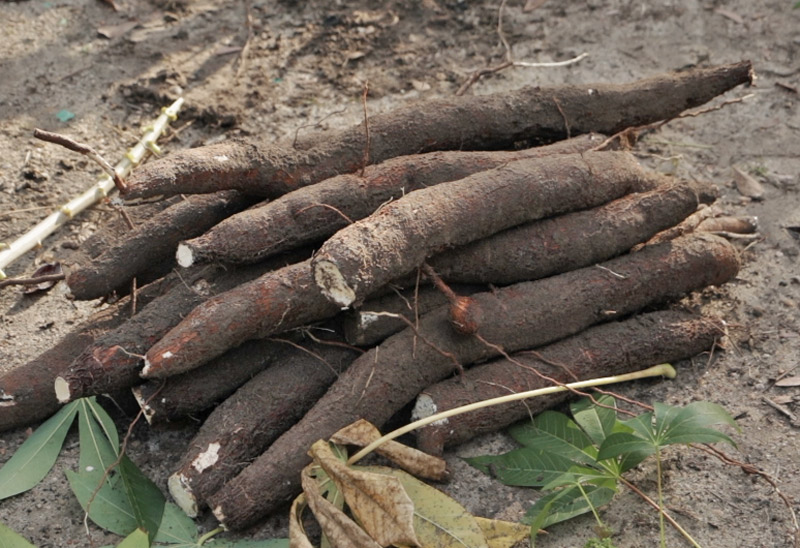
9 comments
Please pardon me if I missed this in your video about growing cassava, David. but can cassava tolerate any shade?
I am wondering about including them in a food forest. (I am starting to convert an area with existing scrub and mostly young trees to a food forest.) I know I shouldn’t plant them too close to existing large trees because I need to be able to dig the roots. But I am wondering if they are ok with half-day sun or lightly filtered shade.
I am in North Florida, right at the 8b/9a border if that matters.
Any other tips on where in a food forest to plant them, or which plants make particularly good or bad neighbors for them would be appreciated.
Thanks!
They can take a little shade, but are best in full sun. We put them in open spots and around the edges of food forests. They just get leggy and don’t make roots in the shade.
Thanks for the help!
How do you store the cuttings you are saving? Do you pot them?
Some, yes. Others I cut into long pieces and put into a plastic bin, covered in hay, to keep in a non-freezing location until spring when they are planted.
How long will they last in storage this way? Thanks!
I’ve had them last a solid 4 months when in a bin, covered with some hay.
Thanks for mentioning the frost! It wasn’t supposed to do that here– our forecast said low of 38. But I took the cautious route and brought in all the potted plants. 29 when we got up this morning!
I had someone ask what to do with a dead freezer the other day, his wife was thinking “make a smoker” but I doubt that is a good idea.
Perhaps it would be decent for keeping cassava overwinter. The new ones are essentially giant picnic coolers in construction.
Comments are closed.